Gut microbiota regulates chronic ethanol exposure-induced depressive-like behavior through hippocampal NLRP3-mediated neuroinflammation
- PMID: 36280756
- PMCID: PMC9908543
- DOI: 10.1038/s41380-022-01841-y
Gut microbiota regulates chronic ethanol exposure-induced depressive-like behavior through hippocampal NLRP3-mediated neuroinflammation
Abstract
Chronic ethanol exposure (CEE), which can lead to neuroinflammation, is an increasing risk factor for depression disorder, but the underlying mechanism is not clear. Recent observations have revealed the associations among psychiatric disorders, ethanol exposure and alterations of the gut microbiota. Here, we found that CEE induced depressive-like behavior, which could be alleviated by probiotics and transferred from donor to recipient mice by fecal microbiota transplantation (FMT). Neuroinflammation and the activation of the NLRP3 inflammasome were also observed in recipient mice. The downregulation of NLRP3 in the hippocampus mitigated CEE-induced depressive-like behavior and neuroinflammation but had no significant effect on FMT recipient mice. Moreover, elevated serum inflammatory factors in recipient mice showed a significant mediation effect between the gut microbiota and depressive-like behavior. Together, our study findings indicate that the gut microbiota contributes to both hippocampal NLRP3-mediated neuroinflammation and depressive-like behavior induced by CEE, which may open avenues for potential interventions against CEE-associated psychiatric disorders.
© 2022. The Author(s).
Conflict of interest statement
The authors declare no competing interests.
Figures
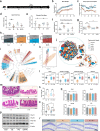
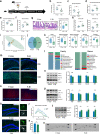
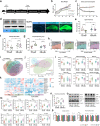
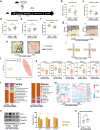
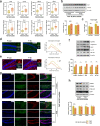
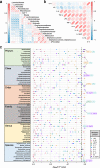
Similar articles
-
Gut microbiota dysbiosis contributes to depression-like behaviors via hippocampal NLRP3-mediated neuroinflammation in a postpartum depression mouse model.Brain Behav Immun. 2024 Jul;119:220-235. doi: 10.1016/j.bbi.2024.04.002. Epub 2024 Apr 8. Brain Behav Immun. 2024. PMID: 38599497
-
Gut microbiota modulates depressive-like behaviors induced by chronic ethanol exposure through short-chain fatty acids.J Neuroinflammation. 2024 Nov 6;21(1):290. doi: 10.1186/s12974-024-03282-6. J Neuroinflammation. 2024. PMID: 39508236 Free PMC article.
-
Gut microbiota from NLRP3-deficient mice ameliorates depressive-like behaviors by regulating astrocyte dysfunction via circHIPK2.Microbiome. 2019 Aug 22;7(1):116. doi: 10.1186/s40168-019-0733-3. Microbiome. 2019. PMID: 31439031 Free PMC article.
-
Interplay between Gut Microbiota and NLRP3 Inflammasome in Intracerebral Hemorrhage.Nutrients. 2022 Dec 9;14(24):5251. doi: 10.3390/nu14245251. Nutrients. 2022. PMID: 36558410 Free PMC article. Review.
-
Microbiota-gut-brain axis in health and disease: Is NLRP3 inflammasome at the crossroads of microbiota-gut-brain communications?Prog Neurobiol. 2020 Aug;191:101806. doi: 10.1016/j.pneurobio.2020.101806. Epub 2020 May 28. Prog Neurobiol. 2020. PMID: 32473843 Review.
Cited by
-
Research progress on acupuncture treatment in central nervous system diseases based on NLRP3 inflammasome in animal models.Front Neurosci. 2023 Feb 28;17:1118508. doi: 10.3389/fnins.2023.1118508. eCollection 2023. Front Neurosci. 2023. PMID: 36925735 Free PMC article. Review.
-
Gut microbiota dysbiosis induced by alcohol exposure in pubertal and adult mice.mSystems. 2024 Dec 17;9(12):e0136624. doi: 10.1128/msystems.01366-24. Epub 2024 Nov 27. mSystems. 2024. PMID: 39601556 Free PMC article.
-
Multi-Strain Probiotics Alleviate Food Allergy-Induced Neurobehavioral Abnormalities by Regulating Gut Microbiota and Metabolites.Nutrients. 2025 Jun 8;17(12):1955. doi: 10.3390/nu17121955. Nutrients. 2025. PMID: 40573066 Free PMC article.
-
Gut Microbiota Alleviates Intestinal Injury Induced by Extended Exposure to Light via Inhibiting the Activation of NLRP3 Inflammasome in Broiler Chickens.Int J Mol Sci. 2024 Jun 18;25(12):6695. doi: 10.3390/ijms25126695. Int J Mol Sci. 2024. PMID: 38928401 Free PMC article.
-
Prenatal Stress and Ethanol Exposure: Microbiota-Induced Immune Dysregulation and Psychiatric Risks.Int J Mol Sci. 2024 Sep 10;25(18):9776. doi: 10.3390/ijms25189776. Int J Mol Sci. 2024. PMID: 39337263 Free PMC article. Review.
References
Publication types
MeSH terms
Substances
LinkOut - more resources
Full Text Sources

